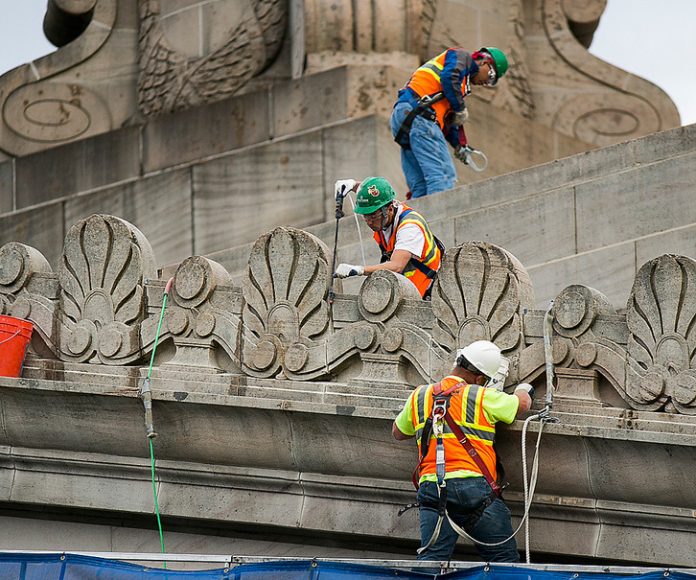
The stressors of sunlight, shifts in weather, water, building movement, and settlement can break down and deteriorate building facades, creating comfort, safety, and maintenance issues that can quickly add to the cost of property ownership.
“Now that winter is almost over, spring marks an ideal time for building owners and facility managers to survey their buildings and structures for any damage that may have resulted from the cold, winter weather, make repairs, and perform preventative maintenance to protect the exterior going forward,” said Jason Holtman, a facade expert at Western Specialty Contractors.
Holtman added that a masonry and facade restoration specialist can help identify problem issues such as cracking, efflorescence, spalling, control joint failure, and sealer or caulk failure, and recommend a repair and prevention plan that protects the property from leaks and water damage. Proper facade maintenance helps reduce the likelihood of unexpected costs and repairs and maintain the property’s value, said Holtman.
Structure facades can be made from any number of materials including brick, terra cotta, granite, marble, sandstone, limestone, brownstone, concrete masonry units, glass curtain wall systems, Exterior Insulation Finishing Systems (EIFS), and precast concrete. Likewise, they can all deteriorate for any number of reasons, including: lack of maintenance; movement; freeze/thaw; air pollution; improper workmanship/design; and moisture.
Ongoing maintenance is always recommended to minimize exterior damage, no matter what the building material. Holtman recommends regular, proper cleaning of the building’s facade in the spring.
“A clean facade projects professionalism, can increase sales for businesses located within the building, increase the life of the property, improve the building’s value, and make surveying winter damage easier to see,” said Holtman.
Facade cleaning can be performed using a variety of methods including: high-pressure water; low-pressure water; sandblasting; wet aggregate blast; hot water steam; chemicals; soda blast; poultice; glass bead; and sponge blast.











